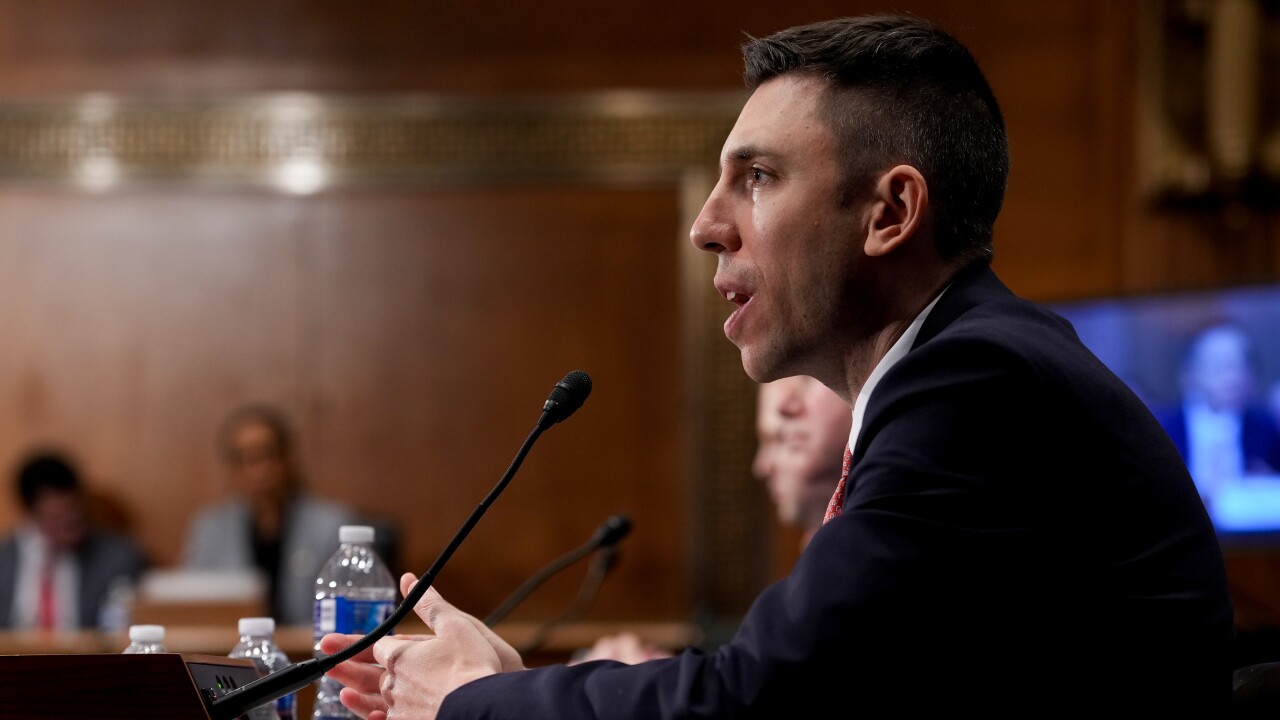
Some of these physical add-ons are short-lived attempts to bridge digital and non-digital payment habits. Others became permanent fixtures. But unexpectedly, this wasn't a temporary growing pain for the mobile wallet market — even to this day, digital payment companies are finding they can't stay purely digital.
This listicle is compiled from reporting by PaymentsSource writers including John Adams, Kate Fitzgerald and David Heun. Click the links in each item to read more.

Venmo's new cards take a lesson in design
The card follows a move to prune web-based P2P payments, keeping the Venmo experience focused on mobile devices. Even the card's application page directs users to open the Venmo app to reserve one of the limited-issue Venmo-branded Mastercards.
In addition to making retail payments, the Venmo card can be used to reload Venmo balances via ATMs.
Venmo's plastic card went through a first iteration as a Visa card that featured a bland

Green Dot's 'checkless' checking account … adds checks
Lately GoBank has been focused on other physical products. A new cobranded
The Uber Visa Debit card is configured so drivers may select the debit option and enter the card’s four-digit PIN at the pump to get cash back for gasoline purchases with the card. The card offers discounts on a range of other retailers’ services, with no requirement to enter a PIN.
The idea of a perk that requires a PIN is somewhat less common in a world where more merchants are leaning toward streamlined payments requiring no PIN or signature—and as of April 15

The many, many PayPal plastic cards
In April, PayPal expanded payment options for unbanked consumers by introducing the
The PayPal Cash Card is separate from PayPal Prepaid Mastercard, introduced in 2012 by NetSpend and sold at retail stores; and the PayPal Business Debit Mastercard, introduced a few years ago by The Bancorp.
“In an era of mobile technology and advanced software platforms, we can do more to unlock the potential of financial technology to improve the financial health of billions of people across the globe,” said Bill Ready, PayPal’s COO and executive vice president, in a
The new prepaid card also supports free bank account transfers and P2P transfers between PayPal customers, but there’s a 1% fee to get a payroll check cashed immediately and a 5% fee for cashing other checks. The Bancorp issues the card and Ingo Money supports cash loads at CVS, 7-Eleven and Rite-Aid for $3.95 per reload.

The original mobile wallet dabbles in plastic
Google began offering a plastic

Amex's Serve helps telcos launch their wallet
The 2013 deal gave Isis — which the telcos later rebranded as Softcard — a link to Amex's the Serve cards to enable purchases at stores that did not accept contactless payments at the point of sale. Conversely, Serve customers, who would not need NFC phones to transact, could then opt into Isis and use their NFC-enabled phones at the counter.
Executives at both companies said customers would be able to make P2P payments and load funds through direct deposit, among other features.
The move served as a reminder that neither company felt confident enough at the time to conquer digital payments alone. And even with help, the telcos weren't able to succeed; even after its rebranding, Isis/Softcard was eventually shut down.

Square's plastic card gives it a branding kick
Last year,
The Square Cash Card comes in black with white print, allowing cardholders to customize the front with either their own signature or a sketch of their choosing. Square seems to have a
“If you want to be top of wallet you need to be able to play both in the digital world and the physical world," said Michael Moeser, director of payments at Javelin. "Plus, since only 1 in 10 dollars are spent online, gaining physical POS dollars for digital players like Venmo and Square is pure uncharted territory.”

Coin puts the card first
When the card was originally announced in 2013, West Monroe Partners
But Coin was one of a slew of multi-account cards from the likes of
Coin made a fresh attempt at a broad mobile payments play in early 2016, forging a partnership with MasterCard, which vowed to use Coin’s NFC-based mobile payments technology to power an array of wearables as part of MasterCard’s Commerce for Every Device initiative, angling to leverage the emerging Internet of Things. According to MasterCard, that partnership is still in place.
The same year, Coin sold off its technology to





